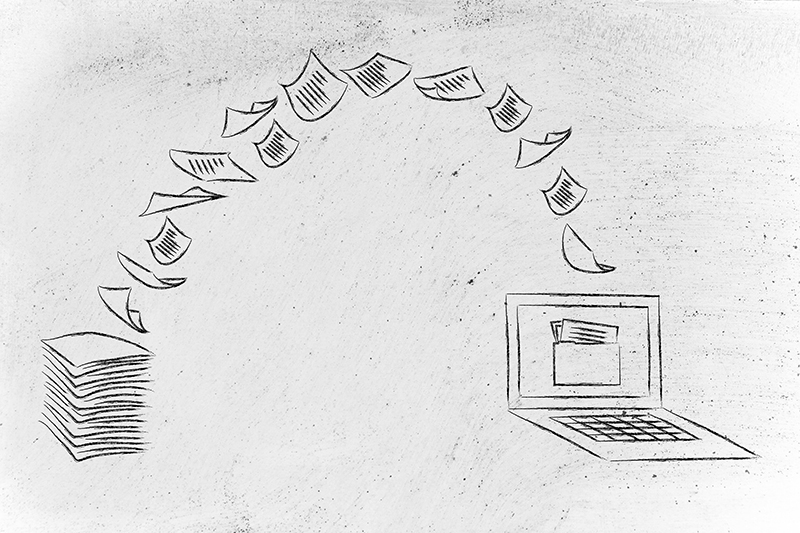Healthcare organizations need to realize the significance of scanning medical records and preserving them in digital format. Medical document scanning improves operational efficiency and eliminates time-consuming paper-related activities. Partnering with a reliable document scanning company can ensure a proper document scanning plan for smooth, seamless digitization at budget-friendly rates.
Why Medical Document Scanning Is Important
Scanning involves converting printed documents and images into digital format, allowing them to be stored on computers and other devices. The scanned document is saved as an image file. The image file can then be edited, emailed, or printed, as you would any other file on your computer. Scanning medical document is important for many reasons:
- HIPAA compliance: Scanning medical documents improve physician practice efficiency and is the key to complying with HIPAA regulations. HIPAA requires healthcare providers to protect personal health information (PHI), and the best way to do so is by scanning and storing it electronically in a secure location. If a doctor’s office loses patient files, scanning them allows them to be quickly retrieved and patient care will not be interrupted. Scanned files can also be shared with other care providers as necessary and they can access the records immediately instead of waiting for them to be delivered by post or faxed.
- Preserves medical records: Medical offices are required to keep patient records for a specific period. Having the files available electronically means they can be retrieved easily and quickly.
- Boosts productivity and saves time: Getting all medical documents in digital format helps physicians and other healthcare providers to access and retrieve the data easily. They can also share it easily share it among other physicians to provide better patient care. This helps to save time as well as boosts productivity in the healthcare organization.
- Easy to store and manage files: Paper based medical records can take up a lot of physical storage space and also make management of medical records difficult. Medical records in paper format can be lost or misplaced which compromises the safety of patient data, and also results in inconsistent layouts, no clear audit trails, etc. All of this can lead to poor patient care, long wait times for patients, and increased pressure on physicians. Scanning medical records help organize all data carefully and eliminate the need for physical storage. Scanning healthcare records and encrypting them promotes confidentiality of patient information and streamlines workflow.
Now that we are clear about why scanning of medical records is important, the next important thing is to understand how the medical record digitization process works.
How to Scan Medical Documents
- Identify the documents to scan: Medical documents stored in paper format should be analyzed to find out which documents should be converted into digital format. This will ensure that all vital documents are scanned.
- Preparation of documents: Medical documents are often more detailed than what you would find in other industries. They can include X-rays, test results, prescriptions and personally identifiable information (PHI). Before scanning them, it is important to prep the documents. It includes removing staples, paper clips, and fasteners, fixing ripped or torn papers, unfolding folded paper corners, and so on.
- Scanning: Each document should be scanned carefully. This requires attention to detail to ensure that the output is excellent. Professional medical document scanning service will ensure high quality output.
- Quality control: Proper quality control is essential to assure that every image is accurately scanned. It also helps to keep a check on missing documents, missing images. Each and every image is reviewed thoroughly to make sure that it is readable.
- Indexing: Indexing is the next important step. Each medical document is indexed on the basis of the patient’s DOB, patient ID, social or patient number. Charts are captured and tagged in a manner consistent with the EMR or EHR program. Indexing makes it possible to find any document when required.
- Importing data: Once the scanned medical documents are indexed, the next step is to import them into the EHR. It is important to make sure that all documents are successfully integrated into the EHR.
- Shredding unnecessary documents: After scanning is complete, the next final step is to shred unnecessary paper documents, including those past retention time.
Every healthcare organization needs to develop an implementation and post-implementation scanning workflow along with proper policies and procedures for scanning. Enough time must be dedicated to training staff on these policies, strategies, and workflows. Partnering with a medical document scanning company can help practices improve workflow and patient care.




